Spotlight Series: Alberto Vicentini & the Abundance of Species at Manaus, Brazil FDP
Alberto (Beto) Vicentini is a tropical botanist at Instituto Nacional de Pesquisas da Amazônia (INPA) in Manaus, Brazil. He is also a co-PI of ForestGEO’s 25-ha Manaus FDP, a plot located within the Biological Dynamics of Forest Fragments Project (BDFPP). Recognizing the wealth of historical data from BDFPP, as well as from the 25-ha plot and other research endeavors, Beto developed OpenDataBio, software to facilitate the management and distribution of biodiversity data. When he’s not working, he enjoys navigating along the Rio Negro…and he’s probably still looking at plants.
When did you realize you wanted to be a scientist/work in forest ecology? How did you decide to go down this career path?
I am a first-generation Brazilian from Italian immigrants. My parents established in São Paulo state, in a small town in a rural landscape, completely removed from Brazil’s native semi-deciduous forests that existed until the 1950’s. This region was so devoid of trees, glabrous, just to use a botanical metaphor, that as a child I expressed to my parents ‘joy for being in the forest’ when visiting a small park on the Avenida Paulista, the financial center of the capital, São Paulo city. We moved to Curitiba, a city whose name means “land of araucaria” in Tupi-Guarani, an indigenous language of the area (“curi or ‘kur í’ ” = the Araucaria tree, and “tiba” or “tuba” = “many”). There I started my studies in forest ecology and got particularly interested in botany.
The Curitiba area is a particularly interesting part of southern Brazil. The Araucaria forests occupy a highland landscape around 1000m elevation, and toward the coast on the East, the more moist, non-Araucaria forests cover the Atlantic mountain chain and coastal plains, forming a rich mosaic of different vegetation types, which are quite preserved from what is left of the Atlantic forest biome. I studied forestry at the University of Paraná and got involved with the work of a group of professors, Franklin Galvão, Yoshiko S. Kuniyoshi, and Carlos V. Roderjan, through whom I had the opportunity to learn, with lots of fieldwork, about this rich mosaic of vegetation types, their soil relationships, and their beautiful flora. This period in the early 1990’s was my initiation in tropical forest ecology science and what led me to a scientific career.
When I finished my degree in forestry I backpacked towards the North to get to know Brazil. When I arrived in the Amazon region, I started looking for a research experience and was fortunate to meet Mike Hopkins at INPA, who was starting to produce what became my most cited contribution to tropical forestry to date, the ''Reserva Ducke Identification Guide.'' As people say in Manaus, “Comeu jaraqui não sai mais daqui” (Eat the jaraqui [popular fish], you never leave here!). I am still here!
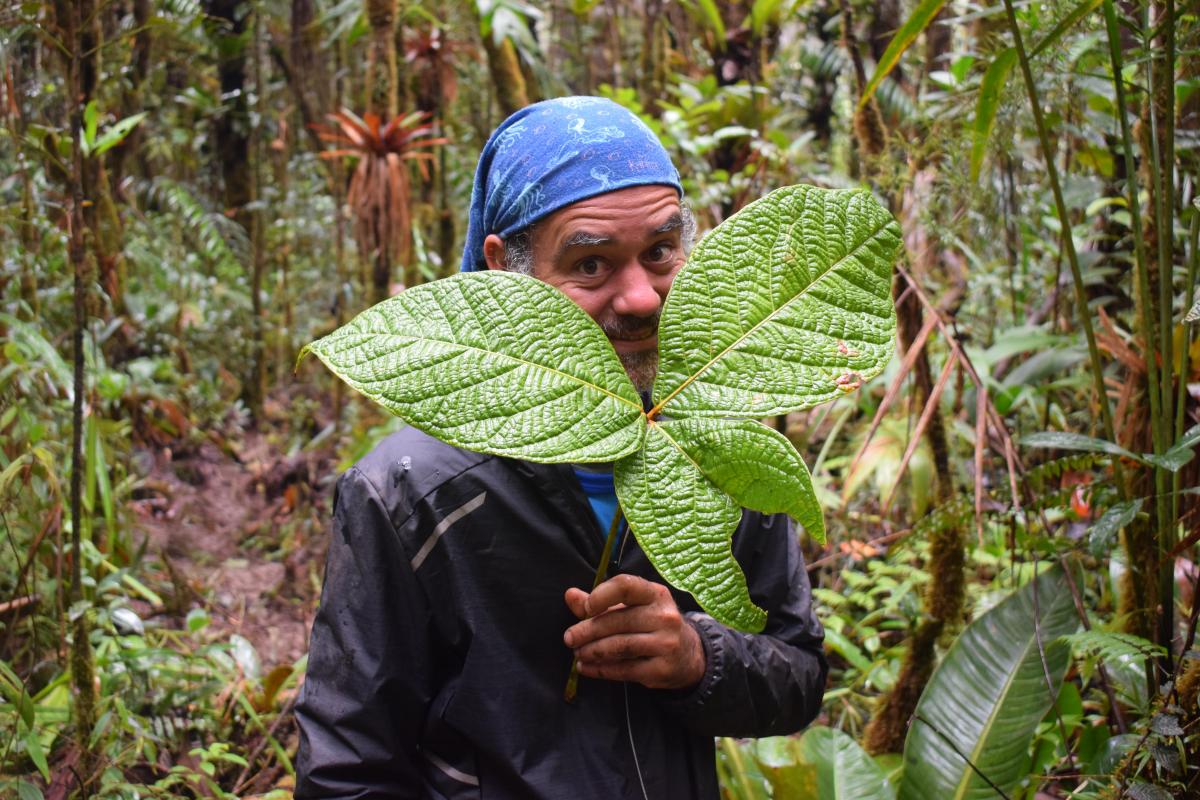
Photo credit: Francisco Farroñay, 2019.
What led you down the path to your current job?
I consider my work for the flora of Ducke Reserve to be an informal master’s degree. Through this project I had the opportunity to meet lots of researchers working at INPA (and beyond) in many aspects of tropical biology. Working with them changed my understanding of how science works and opened my doors to follow. I visited the Missouri Botanical Garden in 1998 to work with Henk van der Werff on the Lauraceae, a challenging family, for the Ducke guide. It was a short visit to Missouri, but it was a rich time, and I met lots of students from all over the world studying tropical biology in Saint Louis, and at the University of Missouri Saint Louis (UMSL). When the Ducke project finished, I applied for a Brazilian government scholarship (CNPq) to do a PhD in Ecology, Systematics and Evolution at UMSL, and the scholarship was granted.
When I applied to UMSL, I was interested in learning more about plant evolution, as my degree in forestry had little focus on evolutionary biology, and I was particularly fascinated by the white-sand vegetation ecosystem in the Amazon region and the link of such flora with that of the Tepui highlands of the Guiana Shield. So, when I arrived in Saint Louis, I already had a project in mind that would allow me to learn about plant systematics and phylogenetics, while also visiting those beautiful landscapes and ecosystems in the Amazon. My PhD was on the evolutionary history and classification of a white-sand plant specialist lineage (Pagamea, Rubiaceae), a group and ecosystem that are still strongly part of my current research.
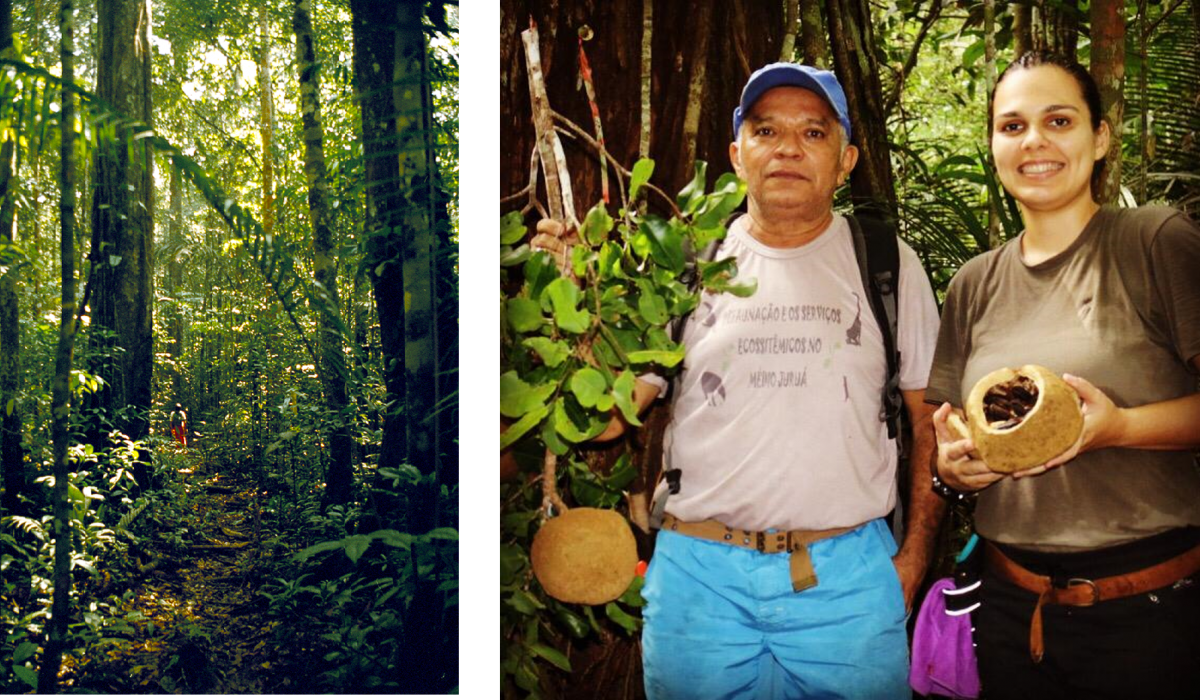
What has been your biggest challenge in getting to this point in your career?
My scientific career to this point had very few challenges and lots of opportunities. I come from a privileged social class, and in strongly unequal countries such as Brazil, this means you have many more opportunities throughout your life than most of your fellow citizens. This was changing during the Lula-Dilma governments, when many low-income Brazilian students got opportunities to go to a university and to enrich their skills with experiences abroad.
What is the most interesting or unique aspect of your site?
Although about 30% of the species in the BDFFP lack a formal taxonomic name at the species level, the flora of the Manaus region is perhaps still the best known in the Amazon. For me, the most interesting aspect of the Manaus plot is the practical challenge of having to identify so many individuals to species, and learning how such high levels of diversity at a local level can help us to improve our understanding of species in the Amazon. There are ca. 1,300 species in the 25-ha Manaus plot, making this site the most diverse of the ForestGEO network. It also has a phylogenetic clustering signal that is an old, described pattern for Manaus. This makes the site particularly useful in studying coexistence among closely related species.
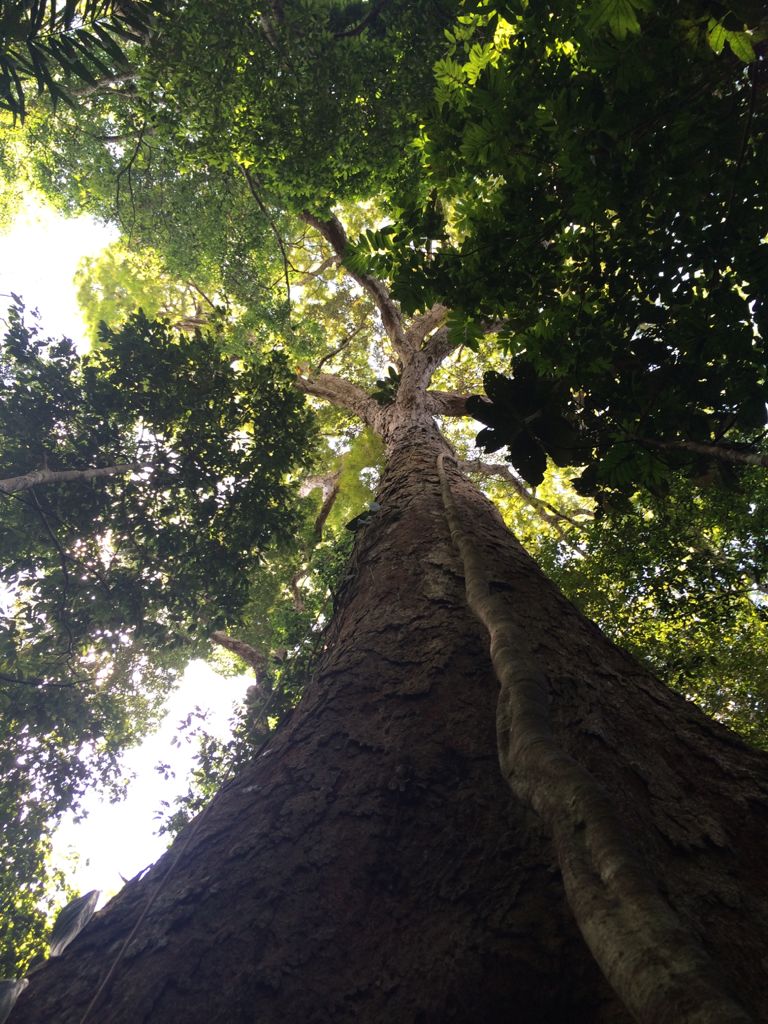
What questions are you currently addressing in your research/site?
I am perhaps an outlier in ForestGEO, as my main research interests are not on forest dynamics, but mostly directed towards describing and defining the species that make the Amazonian forests. I see the BDFFP living collection (which contains almost ⅓ of the known species for the Amazon region) as an important library from which to build models for speeding up the way we discover diversity and understand forest functioning.
My work at the Manaus plot has focused more on creating a robust infrastructure to facilitate data management, data integration, and taxonomic curation of this local flora. I believe that having easy access to data through a system that can curate and integrate data in the long term (alongside robust species definitions) will not only increase the quality of the plot data but also foster new research at our site. Furthermore, such infrastructure is required for the sustainability of the program.
Organizing the historical data from BDFFP and other research projects that I conducted in the Amazon, alongside the need for individual-based data for integrative taxonomies, led me to develop a software (OpenDataBio) for managing and distributing biodiversity data. An INPA installation with all the BDFFP plot data since the 1980s and the two censuses of the Manaus ForestGEO plot will be online by the end of this year.
Finally, my research is not just focused on the Manaus ForestGEO site. I am a professor in the Botany Graduate Program of INPA and teach R, plant systematics and taxonomy. I have supervised students working with plant ecology of white-sand vegetation, floristics, phylogeography of plant lineages and plant taxonomy. As much as I can, I try to engage in expeditions to remote areas of the Amazon just to sample plants to herbaria. My last one, just before the pandemic, was to the beautiful landscape of the Guiana Highlands, to the Serra do Sol tepui in the Roraima National Park and the Ingarikó indigenous land.
What kind of capacity building opportunities does your site provide for students, early-career researchers, and the local community?
INPA is a rich international community that offers opportunities, particularly for students to engage in scientific research. We have nine graduate level programs and have around 500 students among all projects and programs. Students are mostly from Brazil, but we do receive foreigners, particularly from Peru. We also have a scholarship program for undergrads.
Many students have arrived in Manaus as interns with BDFFP and had their first experience in an Amazonian forest. The monitoring program is a permanent door for new undergraduate engagement because the census is a continuous process. For each census a new team is composed mostly of recent graduates from different parts of Brazil. Many of these students enter one of the graduate programs of INPA after this first experience at BDFFP. This program has funded many theses and dissertations since the 1980s, providing housing and funding fieldwork for students. BDFFP has also organized and offered many courses along its history, the most popular being a month-long intensive field course, the Ecology of Amazonian Forest course. These programs have declined over the years due to a lack of resources and the fact that most students nowadays require external funding to conduct research there. BDFFP supports the logistics and camp maintenance, but is not able to fund student research anymore.
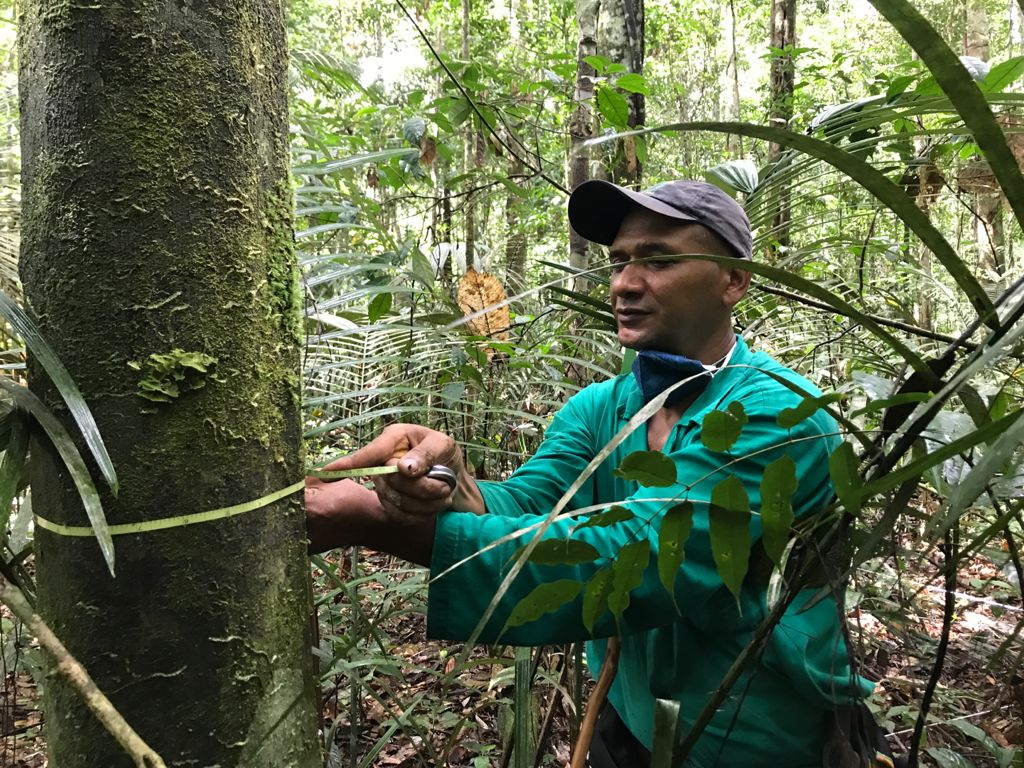
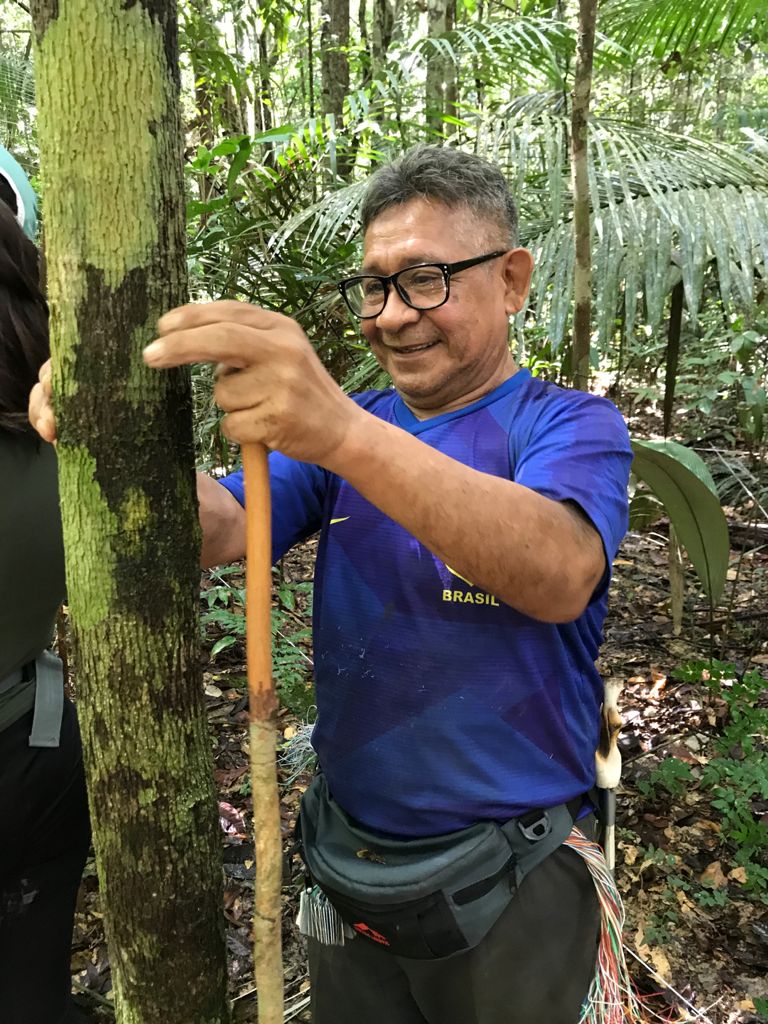
What is your favorite part about your work?
Field work is my favorite part, particularly expeditions to remote areas in the Amazon that usually involve a long stay and a large group of biologists with different expertise. During these trips we always visit and learn about different forest types, collect or see new species of plants, and interact with local people, all of which allows one to better understand the Amazon region. I also like teaching, and the interaction with students is always enriching.
What do you like to do when you’re not studying forest dynamics?
It is hard to draw a line between work and non-work when you live in the Center of the Amazon and you are interested in botany. I live near a large forest fragment inside Manaus, and a simple walk around my house means that you are looking at the same tree species as in the plots. I frequently navigate along the lower Rio Negro with my family and friends to spend the weekend on a beach, kayak inside the flooded Igapó forests, or just eat a nice tambaqui fish. It is impossible to get tired of the Rio Negro landscape. This is my favorite thing to do around here, but, again, the plants are always there, and it is impossible not to bring some samples to the herbaria.
Web Presence
Instituto Nacional de Pesquisas da Amazônia | Lab website | Manaus website (Check back soon! This site is a work in progress) | Google Scholar
Selected Publications
Riberiro, J.E.L.S., Hopkins, M.J.G., Vicentini, A., Sothers, C.A., Costa, M.A.S., Brito, J.M., Souza, M.A.D., Martins, L.H.P., Lohmann, L.G., Assunção, P.A.C.L., Pereira, E.C., Silva, C.F., Mesquita, M.R., & Procópio, L.C. (1999). Flora da Reserva Ducke: Guia de Identificação das Plantas Vasculares de uma Floresta de Terra Firme na Amazônica Central. INPA.
Gomes, A.C.S., Andrade, A., Barreto-Silva, J.S., Brenes-Arguedas, T., López, D.C., de Freitas, C.C., Lang, C., de Oliveira, A.A., Pérez, A.J., Perez, R., da Silva, J.B., Silveira, A.M.F., Vaz, M.C., Vendrami, J., & Vicentini, A. (2012). Local plant species delimitation in a highly diverse Amazonian forest: do we all see the same species? Journal of Vegetation Science, 24(1), 70-79. https://doi.org/10.1111/j.1654-1103.2012.01441.x
Durgante, F.M., Higuchi, N., Almeida, A., & Vicentini, A. (2013). Species Spectral Signature: Discriminating closely related plant species in the Amazon with Near-Infrafred Leaf-Spectoscopy. Forest Ecology and Management, 291, 240-248. https://doi.org/10.1016/j.foreco.2012.10.045
Prata, E.M.B., Sass, C., Rodrigues, D.P., Domingos, F.M.C.B., Specht, C.D., Damasco, G., Ribas, C.C., Fine, P.V.A., & Vicentini, A. (2018). Towards integrative taxonomy in Neotropical botany: disentangling the Pagamea guianensis species complex (Rubiaceae). Botanical Journal of the Linnaean Society, 188(2): 213-231. https://doi.org/10.1093/botlinnean/boy051
Draper, F.C., Baker, T.R., Baraloto, C., Chave, J., Costa, F., Martin, R.E., Pennington, R.T., Vicentini, A., & Asner, G.P. (2020). Quantifying Tropical Plant Diversity Requires an Integrated Technological Approach. Trends in Ecology & Evolution, 35(12), 1100-1109. https://doi.org/10.1016/j.tree.2020.08.003
Damasco, G., Baraloto, C., Vicentini, A., Daly, D.C., Baldwin, B.G., & Fine, P.V.A. (2021). Revisiting the hyperdominance of Neotropical tree species under a taxonomic, functional and evolutionary perspective. Scientific Reports, 11, 9585. https://doi.org/10.1038/s41598-021-88417-y
